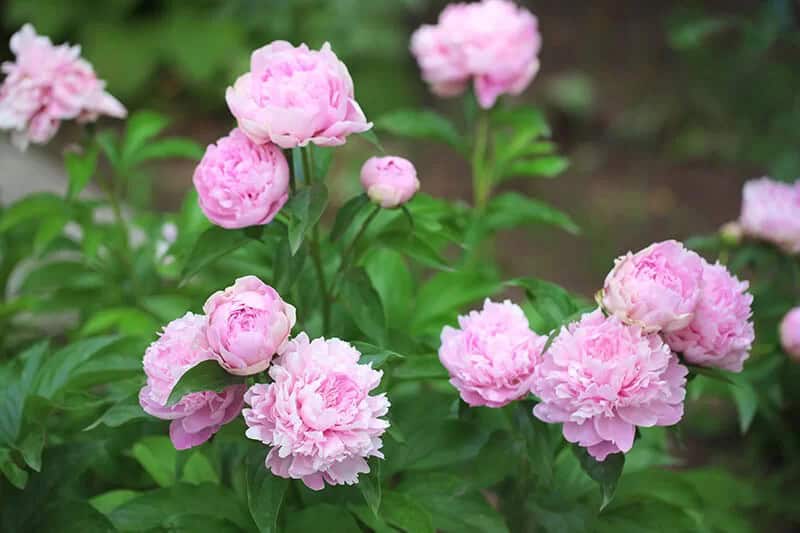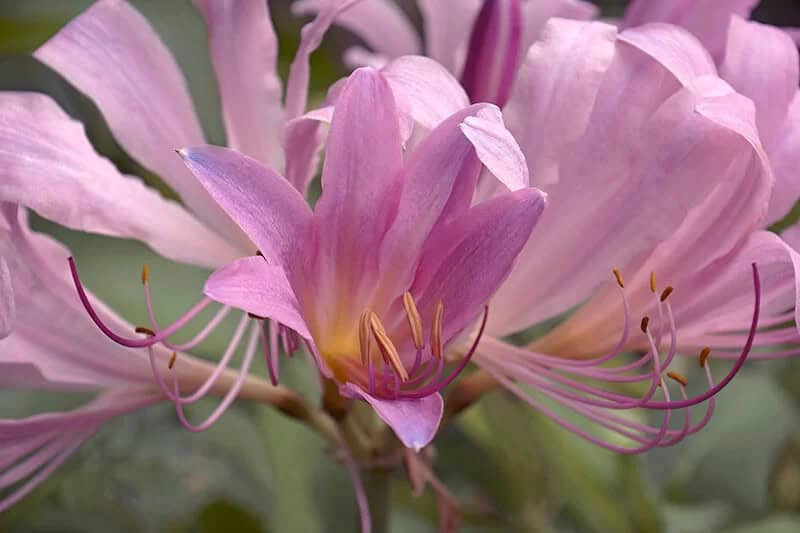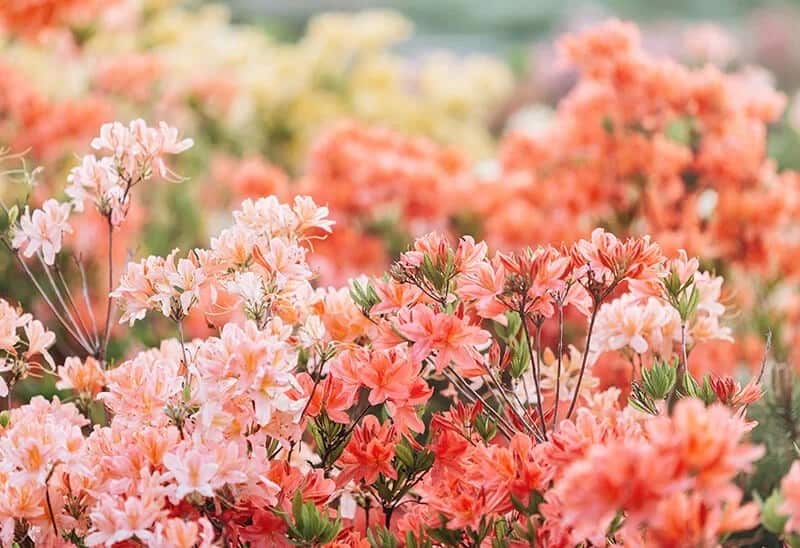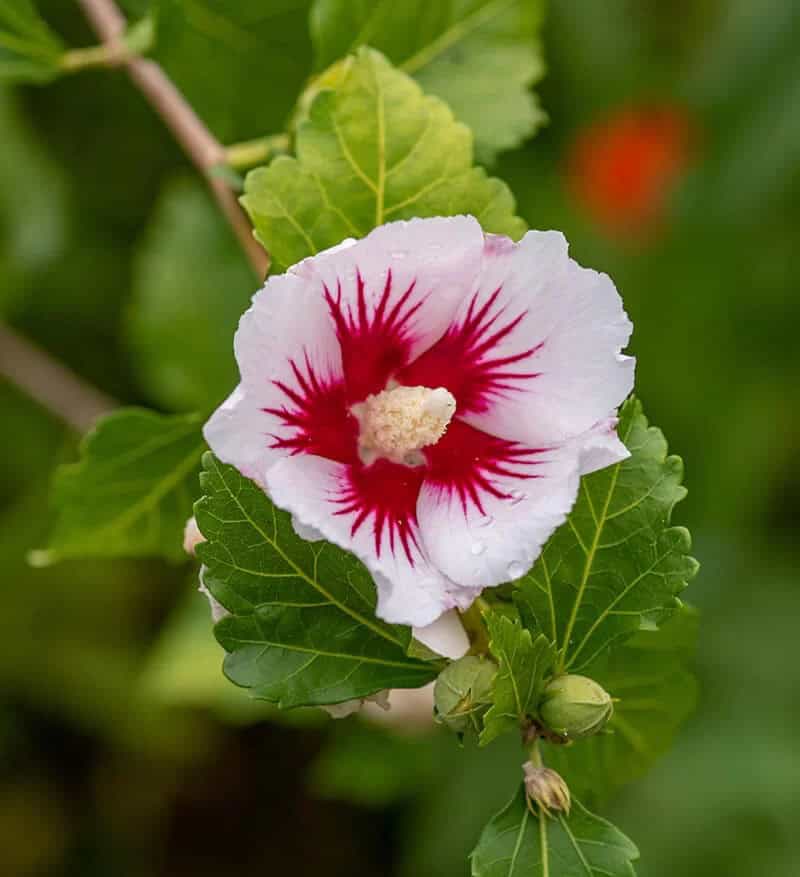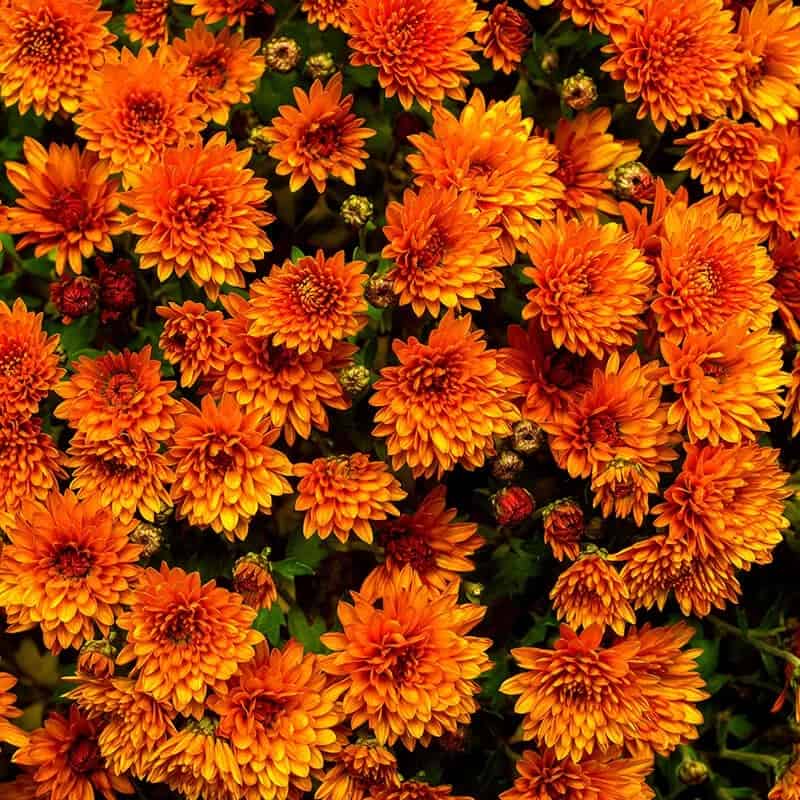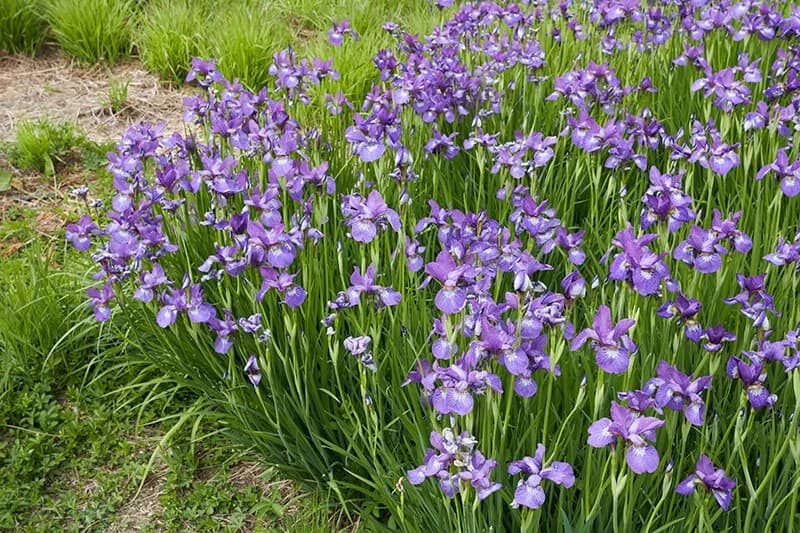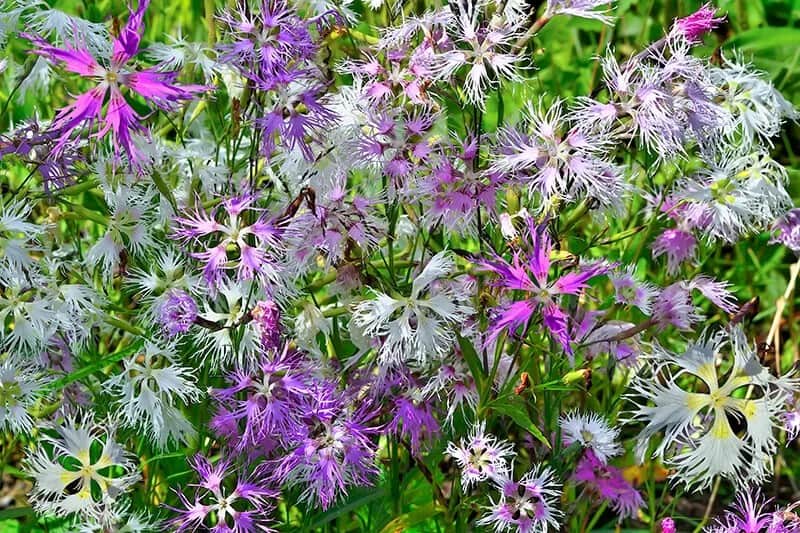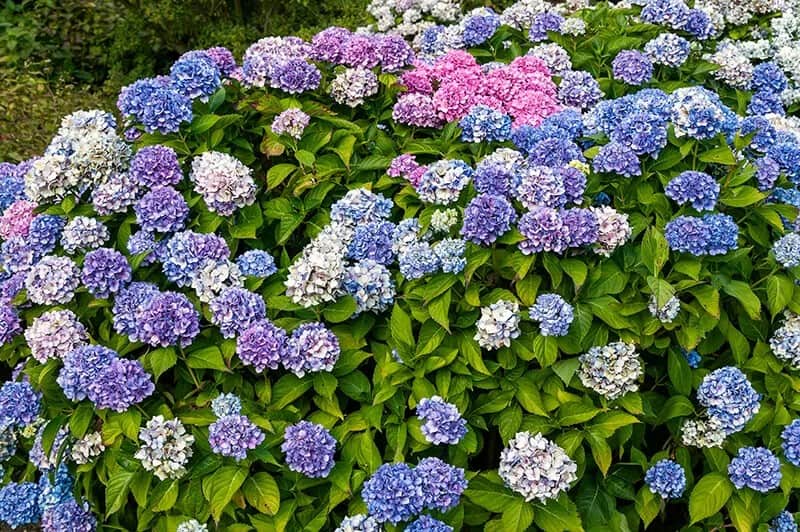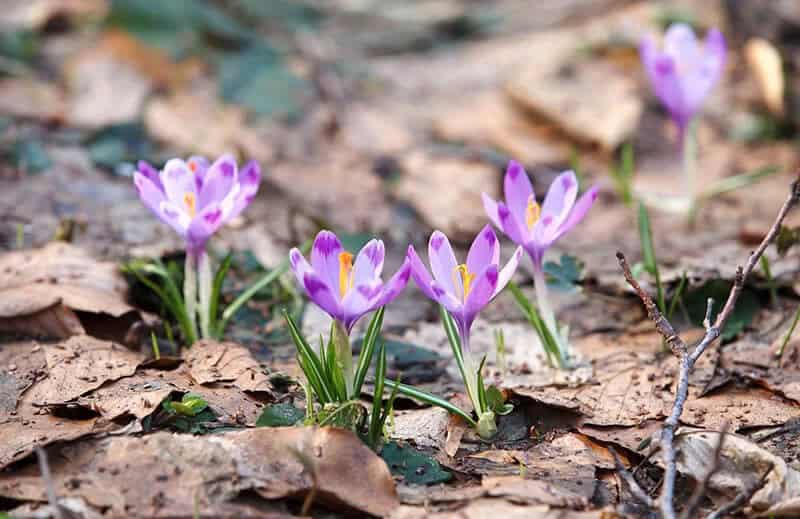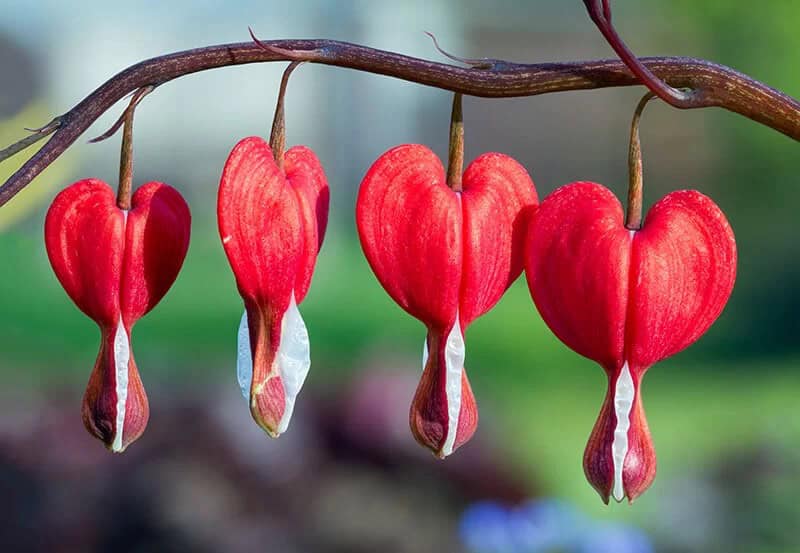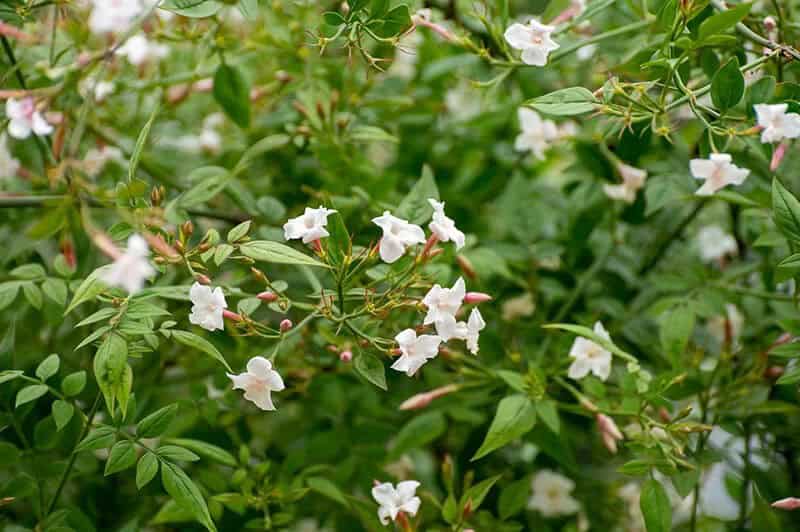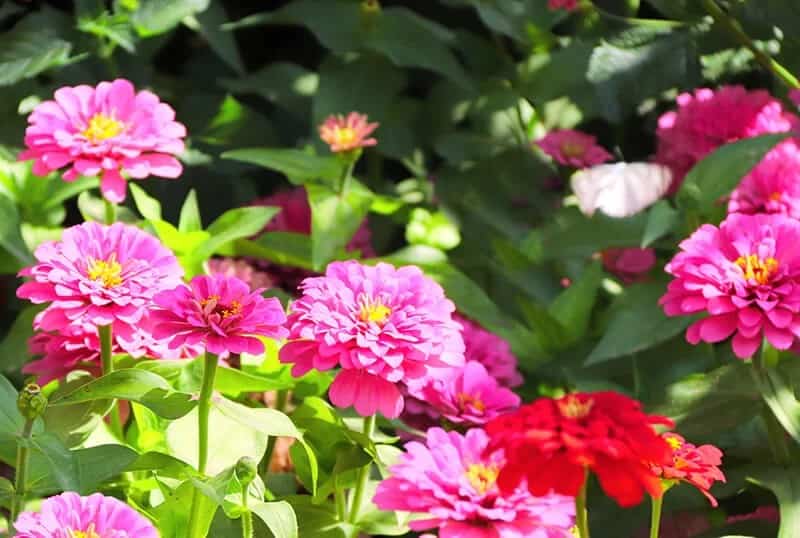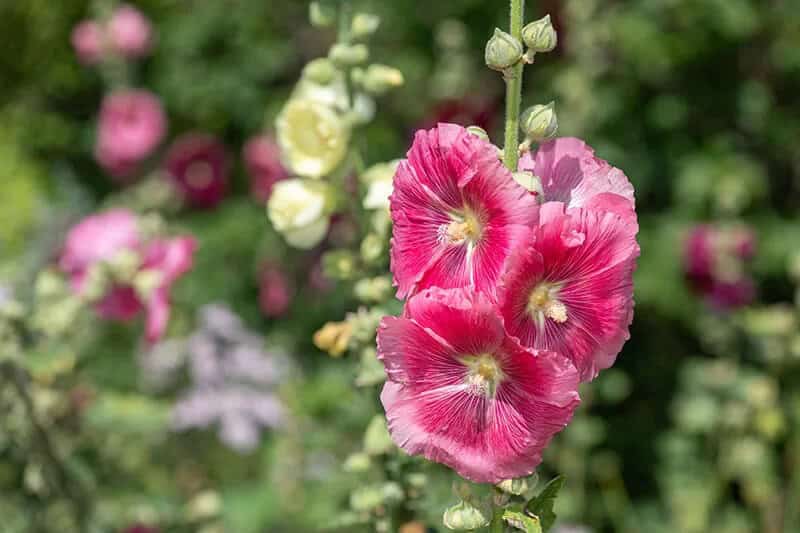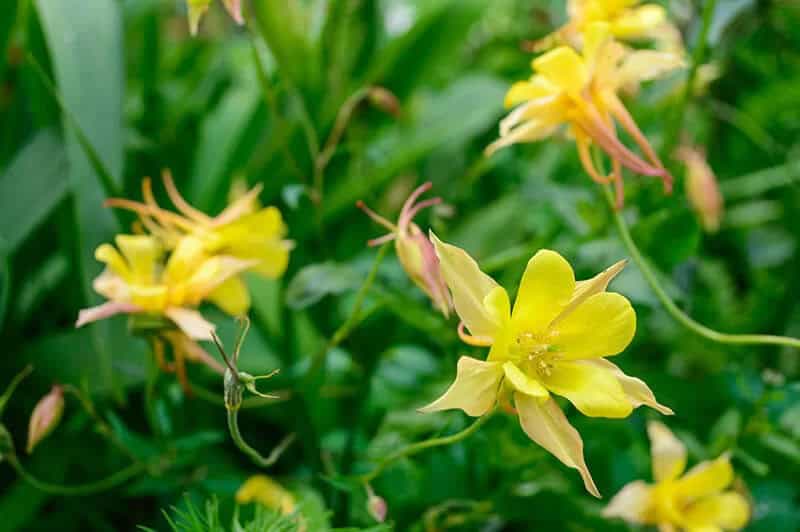The appeal of popular flowers is undeniable, and it’s easy to see why they’re often favored in gardens. What sets them apart? For some, it’s their low-maintenance nature, while others are drawn to their vibrant colors or intricate floral patterns. Perhaps the special significance attached to a particular bloom plays a role in its popularity. And then there are those that thrill with their lengthy blooming seasons.
In reality, it often takes a combination of these factors for a flower to truly stand out and go from ordinary to extraordinary.
27 Popular Flowers to Plant in Your Garden for a Landscape that Resonates with Your Heart
As you plan and design your garden, delve into the symbolism behind time-honored elements. You may be surprised to discover how these classic features can harmonize with your personal path, ultimately creating an outdoor sanctuary that authentically reflects your essence.
Fernleaf Peony (Paeonia Lactiflora ‘Raspberry Sundae’)
The allure of peonies is undeniable, with their lavish blooms captivating gardeners and enthusiasts alike. As a symbol of prosperous marriage, long-lasting love, elegance, and wealth, it’s no wonder pink peonies are often featured in bridal bouquets and cut-flower arrangements. Despite their fleeting beauty, peonies reign supreme in the landscape, making them a treasured addition to any garden.
With medium water needs, fertile soil with good drainage, and thriving in zones 3-8 under full sun to part shade conditions, peonies are relatively low-maintenance yet high-reward flowers. Blooming in May, these stunning blooms offer a brief but intense display of beauty, making them a true highlight of the gardening year.
Trumpet Daffodil (Narcissus ‘King Alfred’)
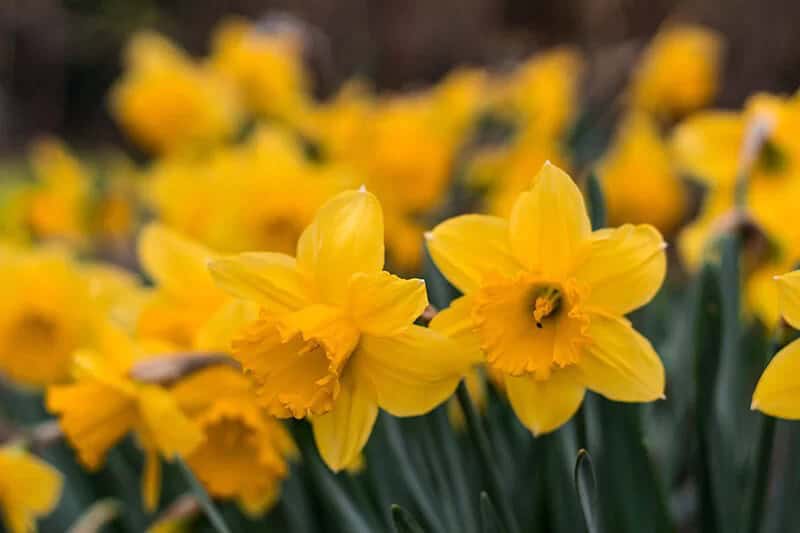
For more than a century, yellow trumpet-type daffodils have been a staple in many spring gardens. Their popularity can be attributed to their ability to produce vibrant and long-lasting blooms with minimal upkeep. One of the primary reasons for their widespread appeal is that they are some of the first flowers to emerge in the spring, symbolizing joyous prosperity, hopeful new beginnings, and laughter.
In terms of growing conditions, these perennials require medium water levels, average soil with good drainage, and can thrive in zones 3 to 8. They also need full sun to part shade and bloom from March to April, making them a great addition to any spring garden.
Forsythia (Forsythia ‘Courtasol’ Gold Tide)
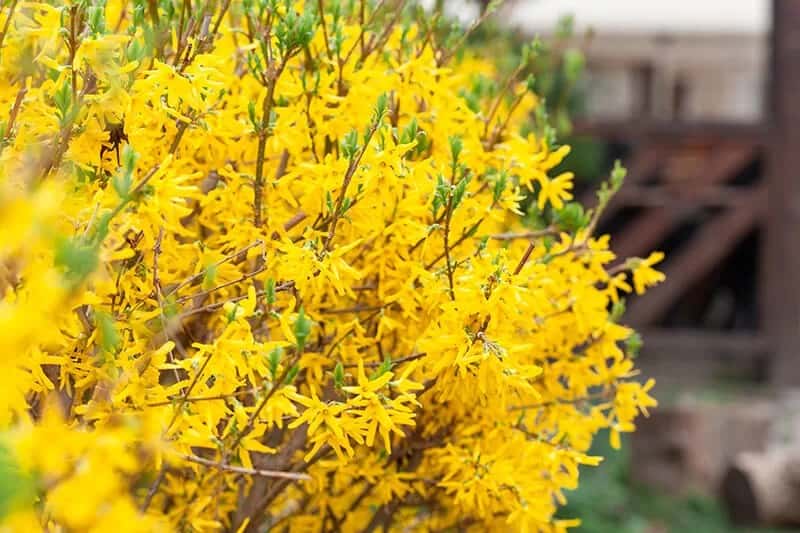
The golden forsythia plant is a harbinger of spring, its bright yellow blooms popping against the winter landscape like a beacon of hope. 🌟 Symbolically, this early riser represents guiltless obedience, eagerness, and a commitment to duty. As it bursts forth in late winter, surrounded by snow or frost, forsythia’s golden banners announce the arrival of warmer weather, filling the air with an undeniable sense of anticipation.
💧 With medium water requirements, this low-maintenance plant thrives in loose-textured soil with good drainage, although it can tolerate clay soil as well. 🪴 As a result, forsythia grows happily in zones 5 to 8, basking in the warm light of full sun to part shade. ☀️ Its blooming season, typically from March to April, is a glorious spectacle that signals the end of winter’s chill and the start of spring’s rebirth.
Surprise Lily (Lycoris Squamigera)
The Surprise Lily, named after one of history’s most renowned beauties, is a symbol-rich plant that embodies rebirth, blissful majesty, and purity, making it a stunning addition to any garden. This flowering bulb requires medium watering and thrives in rich soil with good drainage. Its ideal growing zones are 5 to 9, and it tolerates full sun to part shade. The Surprise Lily’s blooming season typically occurs from August to September, when the summer heat subsides.
Before this, the plant produces an abundance of foliage in spring without displaying any flowers. As summer approaches, that foliage turns yellow, only to be replaced by a grand surprise – a stem bearing a profusion of pink lilies, reminiscent of the beauty that inspired its name.
Evergreen Azalea (Rhododendron ‘Blaauw’s Pink’)
Nothing quite like the vibrant splash of color that an azalea can bring to a garden. These stunning flowers are a symbol of self-care and the first bloom of love, while also representing womanhood in its purest form. As they thrive in rich, slightly acidic soil with good drainage, azaleas require medium water needs and grow best in zones 6 to 9. They prefer part shade and burst into bloom from April to May, filling your garden with a kaleidoscope of colors.
Whether you opt for coral-pink petals or another hue that represents self-care to you, an azalea bush is sure to be the lifeblood of your outdoor space.
Clematis (Clematis ‘Evipo018’ Bourbon)
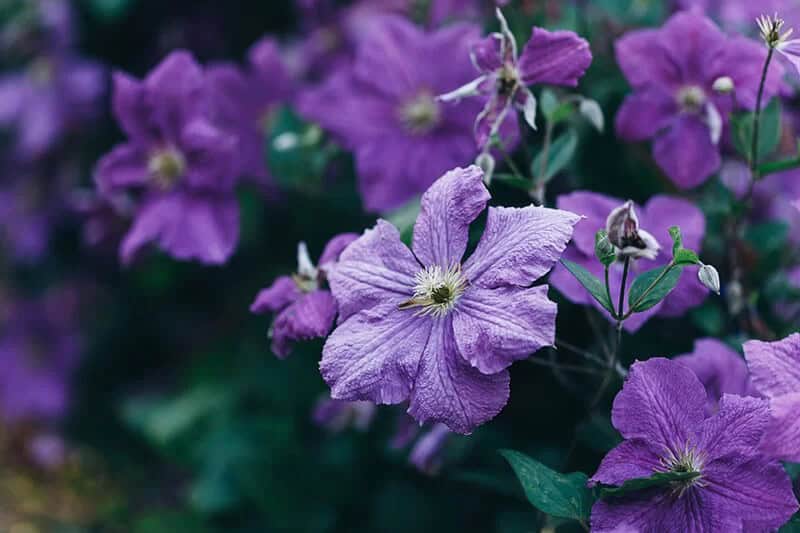
The captivating clematis flower boasts a unique combination of characteristics that make it a sought-after addition to many gardens. With its flair for grandeur, this intelligent bloom thrives in well-drained fertile soil and basks in the warmth of full sun to partial shade. As a medium-watered plant, it’s essential to strike a balance between moisture and drainage. A growing zone of 4-8 allows clematis to flourish, with its blooming season stretching from May to September.
When provided with a trellis or support, this climbing beauty unfurls expansive, vibrant flowers that can be admired for an extended period. Its early bloom period is particularly notable, featuring large and showy blooms.
Rose of Sharon (Hibiscus Syriacus ‘Minspot’ First Editions Fiji)
The Rose of Sharon plant is often sought after due to its lengthy blooming season, which typically spans from June to October. But its appeal goes beyond just its showy flowers. This shrub-like perennial boasts delicate beauty and can serve as a natural screen thanks to its tall stature. Moreover, it requires average soil with good drainage and can thrive in full sun to part shade. Its growing zones are quite forgiving, ranging from 5 to 8.
What’s more, the plant’s medium water needs make it a relatively low-maintenance option for gardeners. This particular cultivar is notable for its petals that gradually darken from white to light pink, adding an extra layer of charm to this already-popular variety.
Chrysanthemum (Chrysanthemum ‘Roadrunner Bronze’)
Chrysanthemums are often overlooked in favor of more showy flowers, but these late-blooming beauties have a special place in many gardens. With their ability to thrive in a range of colors, each one holds its own unique symbolism. The yellow-bronze hue, for instance, is said to represent joyful hope and eternal friendship, providing comfort and cheer even in the most challenging times.
When it comes to growing conditions, chrysanthemums require medium watering, fertile soil with good drainage, and full sun. They’re hardy in zones 5 to 9, making them a great choice for many gardeners. While their blooming season typically runs from September to October, they provide a vibrant splash of color just when the gardening year is winding down.
Aster (Aster ‘Wood’s Purple’)
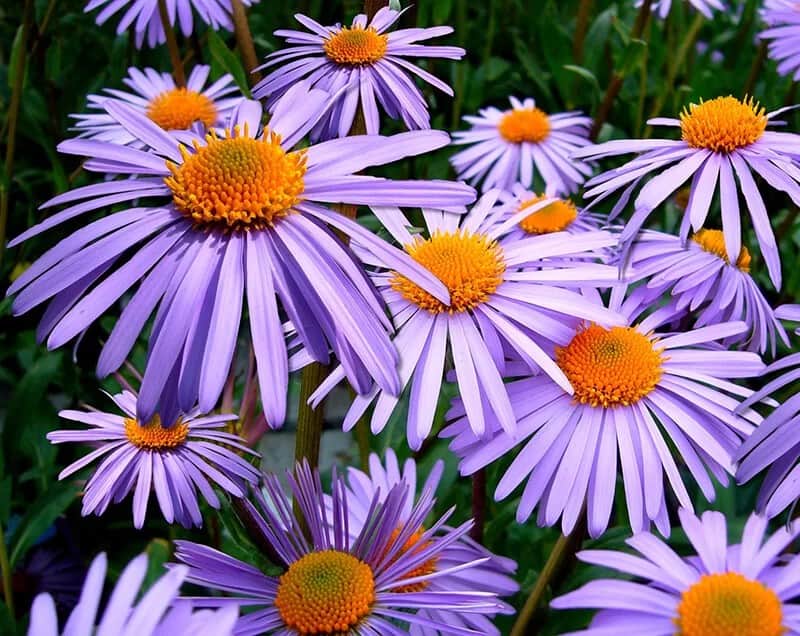
Aster’s delightful charm is amplified when it’s part of a fall-blooming garden. The slender violet petals and playful yellow centers combine to create an ambiance that exudes dainty elegance. This variety boasts improved disease resistance, ensuring a profusion of delicate purple flowers in your landscape. When grown with medium water needs, average soil with good drainage, and full sun to part shade, aster’s enchanting purple hue will illuminate your outdoor space from August to September.
Siberian Iris (Iris ‘Chilled Wine’)
The Siberian iris is a stunning addition to any spring garden, boasting a statuesque height of 30 inches. As one of the most sought-after flowers for early-season planting, these blooms offer an unparalleled display of elegance, serving as a poignant reminder of the beauty and strength that can be found in true friendship. Symbolically, the Siberian iris represents dignified wisdom, valorous strength, and faithful friendships.
In terms of growing conditions, it thrives in medium to wet soil with good drainage, preferring slightly acidic conditions. The ideal growing zones for this flower are 3 to 8, while it requires full sun to partial shade. Blooming season typically falls between May and June, making it an excellent choice for gardeners looking to add a pop of color and sophistication to their outdoor spaces.
Tulip (Tulipa)
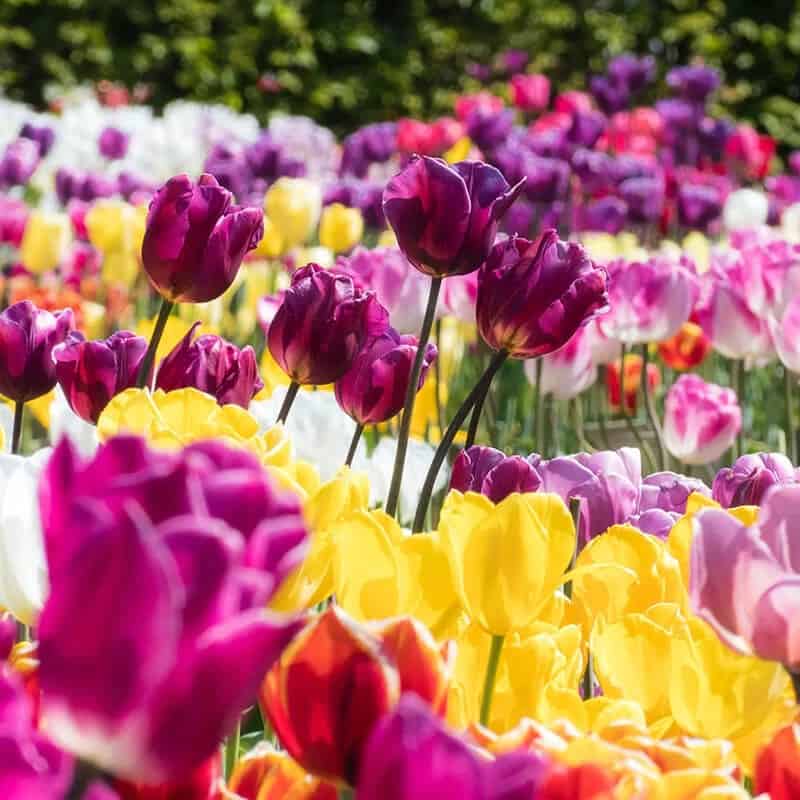
🌼 Spring’s splendor comes alive with vibrant tulips, symbolizing elegant springtime, passionate love, and a long, happy life. These stunning blooms thrive in medium water conditions, fertile soil with good drainage, and full sun. With growing zones ranging from 3 to 8, you can bring this beauty into your own garden. The blooming season typically unfolds between April and May. A large plot of tulips is sure to capture the essence of spring’s splendor.
From red and yellow combinations speaking of passionate love, to unique bi-colors, each color holds its own symbolic meaning. By planting a vibrant display of these beloved flowers, you can bring a touch of springtime magic into your outdoor space.
Carnation (Dianthus Superbus)
As the early summer sun shines down, carnations bring a touch of intricate beauty to your outdoor space. With their delicate petals and ruffled edges, these flowers are perfect for adding a romantic or whimsical touch to your garden design. But did you know that carnations’ symbolism can change depending on their color? Whether you choose to plant vibrant reds, soft pinks, or whites, each hue carries its own unique meaning.
In this way, the right variety of carnation can become a thoughtful expression of love, gratitude, and appreciation for the beauty in your life.
American Wisteria (Wisteria Frutescens)
The American wisteria, with its rich symbolism of welcoming, summertime, and poetic youth, is a stunning addition to any garden. Requiring medium water needs and thriving in fertile, slightly acidic soils with good drainage (USDA zones 5-9), this vine is the perfect choice for climbing trellises, pergolas, and fences. Its six-inch-long inflorescences bring a soft purple hue to your landscape without overwhelming it.
Not only does this plant grow up to 40 feet in its lifetime, but it also excels at signaling welcome, making it an ideal choice for creating a warm and inviting atmosphere.
Poppy (Papaver Orientale ‘Beauty of Livermere’)
The symbolism surrounding the black-spotted poppy is deeply rooted in eternal sleep, everlasting peacefulness, and a tribute to soldiers who have fallen. This striking flower’s association with these themes makes it a meaningful addition to any garden. The poppy’s vibrant red color, accompanied by distinct black splotches, creates a unique visual appeal that can add an energizing splash of color to your outdoor space.
With medium water needs and a preference for fertile soils with good drainage, this flower thrives in zones 3 to 7. When grown in full sun, the poppy blooms from June to July, showcasing its bright red petals and making it a popular choice among gardeners. The black-spotted poppy’s recognizable appearance is reminiscent of fallen soldiers, serving as a poignant reminder of those who have served.
French Marigold (Tagetes Patula)
A symbol-rich flower, marigolds bring together the emotions of joy and anguish, representing non-monetary wealth, motherly love, and protection. They thrive in medium watering conditions and prefer well-draining soil that can tolerate clay. With a wide growing range from zone 2 to 11, marigolds are ideal for most gardens across North America. The flowers themselves burst with vibrant colors – yellow, orange, red, or bicolor – featuring an intricate ruffled design.
Often grown as an annual, these stunning blooms provide not only a pop of summertime color but also natural pest protection. Whether grown in full sun, marigolds are sure to add a touch of warmth and vibrancy to any garden setting.
Dahlia (Dahlia)
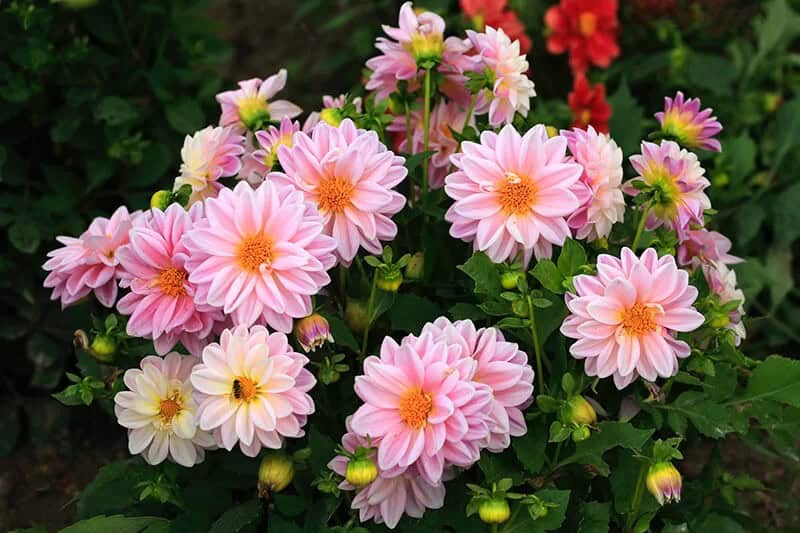
The iconic dahlia, with its symbolism of elegance, dignity, and refined taste, is a stunning addition to any outdoor space. This versatile flower comes in a wide range of colors and forms, making it easy to customize to your unique garden setting. While dahlias do require a bit more maintenance than other flowers, the payoff is well worth the extra effort – their vibrant blooms are truly breathtaking.
As an annual feature in your garden, different varieties of dahlias can grow up to 60 inches tall, offering a dramatic pop of color and texture. In terms of growing conditions, dahlias prefer fertile soil with good drainage, full sun, and a medium level of water. They thrive in zones 7-10, typically blooming from July to September.
Bigleaf Hydrangea (Hydrangea Macrophylla ‘All Summer Beauty’)
Hydrangeas are a popular choice for those seeking low-maintenance perennials that still offer impressive displays of color. At its core, this plant is symbolic of self-satisfaction, perseverance, and deeply felt emotions. With medium watering needs, hydrangeas thrive in fertile soil with good drainage. Gardeners in USDA hardiness zones 5 to 9 can enjoy the benefits of growing these plants, which require part shade and bloom from June to September.
One of the standout features of hydrangeas is their ability to change flower color based on soil chemistry. For instance, ‘All Summer Beauty’ varieties produce blue flowers in acidic soil conditions and pink flowers in alkaline conditions. This means that gardeners can easily experiment with different soil amendments to achieve the desired hue.
Spring Crocus (Crocus Vernus ‘Pickwick’)
Spring crocuses, with their vibrant purple stripes on a soft white background, evoke childlike joy and the promise of new beginnings. These low-maintenance flowers thrive in well-draining soil with moderate moisture, tolerating clay soils but requiring average to good drainage. With a growing range of USDA zones 3 to 8, spring crocuses can be enjoyed across much of North America.
As one of the earliest blooms to welcome spring’s arrival, they embody the hope and renewal that comes with the season’s awakening. In full sun to partial shade, these lovely flowers burst forth in April, filling your space with a sense of delicate beauty.
Bleeding Heart (Lamprocapnos Spectabilis ‘Hordival’ Valentine)
Bleeding heart flowers, with their delicate, heart-shaped petals, embody the essence of passionate love and the freedom to express one’s emotions. As a symbol of spurned love, this cherry red variety, Valentine, adds an extra layer of romantic flair to any springtime garden. With medium water needs, average soil that drains well, and growing zones ranging from 3 to 8, these flowers are relatively low-maintenance.
They thrive in part shade to full shade, with blooming season typically occurring in April and May. As a reminder to be open about one’s feelings, Valentine bleeding heart flowers serve as a beautiful representation of the importance of voicing emotions.
Common Jasmine (Jasminum Officinale)
As you wander through an immersive garden, each sense is treated to a sensory delight. And it’s not just the visual appeal of the lush greenery that captivates – the sweet fragrance of a single common jasmine vine can transport you to a world of serenity. With its pale pink and cool white blooms dripping from the vine like nature’s own perfume, this beloved plant is as easy on the eyes as it is to grow.
Requiring only medium water needs, average soil conditions, and thriving in zones 7 to 10, common jasmine is an accessible addition to any garden. Whether basking in full sun or partial shade, its flowers will bloom from April to September, filling your outdoor space with a sweet aroma that’s sure to enchant.
Zinnia (Zinnia Elegans)
Zinnias are a stunning addition to any garden, boasting vibrant colors and elegant shapes that bring a touch of glamour to even the most mundane outdoor spaces. One of their most notable characteristics is their ability to bloom from late spring into fall, making them a popular choice for cut-flower gardens as well as borders. With a wide range of colors, sizes, and flower types available, zinnias are versatile enough to fit seamlessly into nearly any landscape design.
Whether you’re looking to add a pop of color or create a focal point in your garden, these beautiful flowers are sure to impress. They thrive in medium-watered soil with good drainage and full sun, making them relatively low-maintenance to care for. If you’re new to gardening or just looking for a reliable bloomer, zinnias are an excellent choice.
Sunflower (Helianthus Annuus)
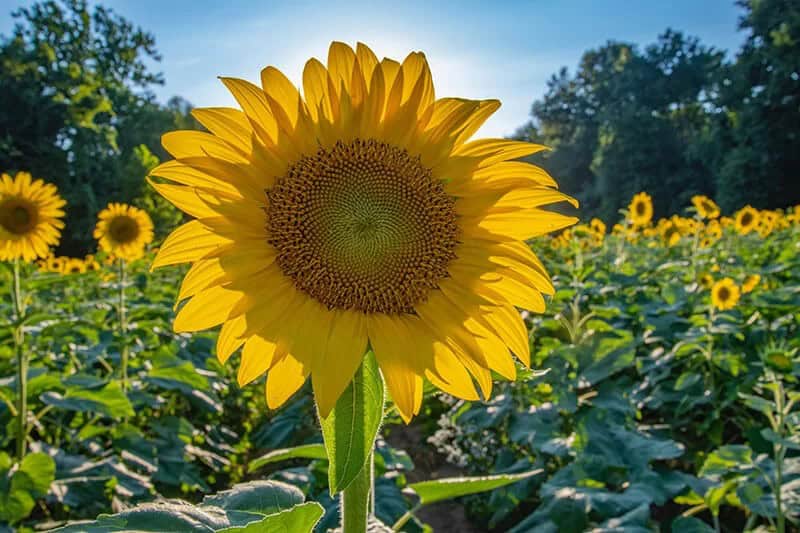
Sunflowers, with their brilliant yellow petals and large brown discs, are a staple in many gardens. What sets them apart from other flowers is not just their bright color but also the symbolism they carry. To some, sunflowers represent glory, relentless devotion, and steadfast adoration – making them a meaningful addition to any landscape. In terms of growing conditions, sunflowers thrive in well-draining soil with moderate moisture levels, ranging from dry to medium.
They prefer full sun to partial shade and can be grown in zones 2 to 11. One of the most exciting aspects of sunflowers is their blooming season, which typically falls between July and August. While tall varieties are certainly impressive, dwarf varieties are also available for those with limited space. Ultimately, sunflowers are a great way to add some height, drama, and meaning to your garden, whether you opt for the towering giants or the more compact options.
Hollyhock (Alcea Rosea)
With its statuesque height of 60 to 96 inches, hollyhock makes for an imposing backdrop among other flowers, evoking a sense of vintage charm. Its open-faced blooms are a popular choice for those seeking to add a touch of whimsy to their garden. Despite being a short-lived perennial, hollyhocks can still thrive by self-seeding, allowing them to return year after year with minimal maintenance.
In terms of growing conditions, hollyhocks prefer medium water needs, average soil with good drainage, and full sun. They are adaptable to a range of climates, thriving in zones 2 to 10. Blooming typically occurs from June to August, making them a great addition to any summer garden.
Petunia (Petunia ‘Ustuni6001’ Supertunia Vista Bubblegum)
Petunias are renowned for their persistent summertime blooms, making them a favorite among gardeners seeking vibrant landscapes. The VISTA BUBBLEGUM variety stands out for its robust, bubblegum-pink flowers featuring stunning purple veins. This hybrid boasts an impressive display of color in the garden from June to October, with floppy petals adding a whimsical touch. While they require average soils with good drainage, petunias are surprisingly adaptable and can thrive in poor soil conditions.
With full sun exposure, these flowers will flourish, making them an excellent choice for gardens in USDA zones 10-11. Medium watering is sufficient, but be prepared to provide more hydration during hot summer days. The symbolism surrounding petunias often represents encouragement, resentment, and intense emotions, adding a layer of depth to their appeal.
Begonia (Begonia × Benariensis Big Series)
Begonias are a unique addition to any garden, offering a combination of striking blooms and intriguing foliage. This particular variety boasts bronze-tinged leaves that can be paired with vibrant red or pink flowers, providing a splash of color in borders or beds. For those seeking a harmonious hue, there are numerous varieties to choose from. Beyond their visual appeal, begonias hold symbolic significance, serving as a reminder to embrace our inner wild child and let our hair down – literally!
With medium water needs, average soil with good drainage, and the ability to thrive in zones 10-11, this variety is well-suited for gardeners seeking a low-maintenance yet high-reward addition. When planted in full sun to part shade, begonias will reward your efforts with blooms throughout May until frost.
Columbine (Aquilegia Chrysantha ‘Yellow Queen’)
The Columbine flower is often characterized by its intricate petals, which resemble an intricate sculpture. Its wide range of colors and patterns has made it a popular choice among gardeners. Among these variations, the yellow columbine stands out as a particularly striking addition to springtime arrangements. This particular variety boasts vibrant gold flowers with uniquely long spurs that add an extra layer of visual interest.
The Columbine’s symbolism is multifaceted, representing sensuous pleasure, peace, and illumination. In terms of its growing requirements, it thrives in medium water conditions and fertile loam-type soils with good drainage. It can tolerate a wide range of soil types, making it a versatile addition to any garden. With growing zones ranging from 3 to 9 and light needs that span full sun to part shade, this flower is suitable for many climates.
Its blooming season typically falls in April and May, making it an excellent choice for springtime gardens.
Rose (Rosa ‘Dolly Parton’)
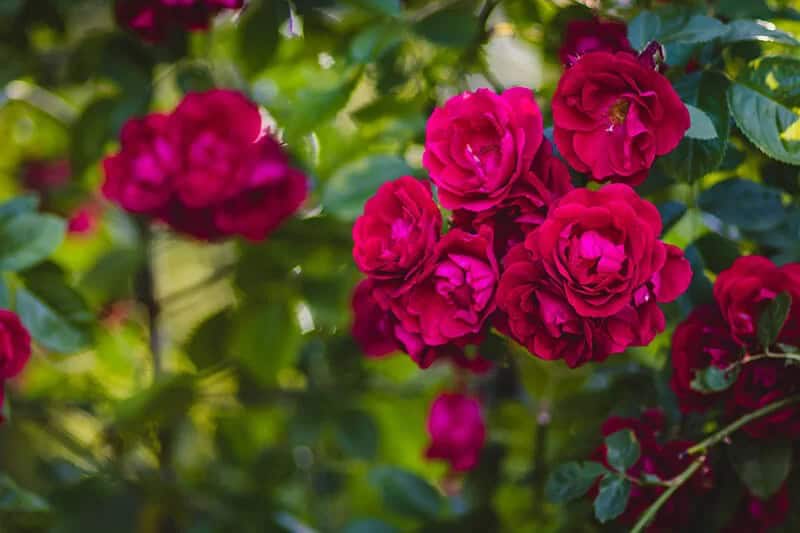
The majestic red rose is a timeless addition to any garden, exuding passion and good fortune with its vibrant red petals. As the queen of flowers, it demands attention with its classic beauty, despite requiring more maintenance than other popular blooms. With its medium water needs, slightly acidic loam-type soils, and full sun, this iconic flower thrives in growing zones 5 to 9, blooming from May until frost.
Its enduring appeal is evident in the images that capture its intense red hue, making it a must-have element in any landscape.
27 of the Most Popular Flowers to Plant for a Space that Fills You with Joy
The spotlight shines brightly on these iconic flowers, as they’re often the main attraction in any garden. Many of them burst forth with vibrant blooms throughout the growing season, serving as a stunning focal point. By pairing them with more understated blooms, you can create an immersive outdoor experience that’s nothing short of enchanting.
Rather than trying to corral all 27 of these popular flowers into your landscape design, take a different approach.
Instead, focus on the ones that truly resonate with you – the ones that put a spring in your step and a smile on your face. By doing so, you’ll create a garden that’s as unique as it is beautiful.
